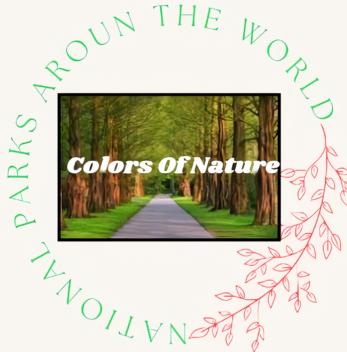Natural Wonders
One of the most iconic features of Yellowstone is its hydrothermal wonders. The park boasts over 10,000 hydrothermal features, including the renowned Old Faithful geyser. Visitors from around the globe gather to witness the awe-inspiring eruptions of Old Faithful, which spouts water approximately every 90 minutes. The vibrant colors of the Grand Prismatic Spring, the largest hot spring in the United States, leave spectators spellbound. The park’s geothermal features are a testament to the Earth’s raw power and offer a glimpse into the planet’s geological past.
Wildlife and Biodiversity
Yellowstone is a sanctuary for a diverse range of wildlife, making it a paradise for nature enthusiasts and wildlife photographers. The park is home to an impressive array of species, including grizzly bears, wolves, bison, elk, and bighorn sheep. The Yellowstone River, which runs through the park, provides a vital water source for the resident fauna. The reintroduction of gray wolves into the park in the 1990s has been a significant conservation success, contributing to the restoration of the park’s natural balance.
Outdoor Recreation
Outdoor enthusiasts flock to Yellowstone to partake in a myriad of recreational activities. Hiking trails of varying difficulty levels offer opportunities to explore the park’s diverse landscapes, from sweeping canyons to alpine meadows. Fishing in Yellowstone Lake, the largest high-elevation lake in North America, is a popular pastime, with anglers seeking cutthroat trout and Arctic grayling. Additionally, the park provides camping facilities, allowing visitors to immerse themselves in the tranquility of the wilderness.
Preservation and Conservation
Preservation and conservation lie at the heart of Yellowstone National Park’s mission. The park’s management endeavors to maintain the delicate balance of its ecosystems while accommodating the millions of visitors it receives annually. Efforts are ongoing to mitigate the impact of human activity on the park’s natural resources, ensuring that future generations can continue to marvel at its splendors.
Yellowstone National Park stands as a testament to the unbridled beauty of the natural world. Its geothermal wonders, diverse wildlife, and pristine landscapes captivate all who have the privilege of experiencing its grandeur. Whether it’s the rhythmic eruptions of geysers, the sight of a grizzly bear in its natural habitat, or the serenity of the park’s backcountry, Yellowstone leaves an indelible impression on all who venture within its borders.
Natural Wonders
One of the most iconic features of Yellowstone is its hydrothermal wonders. The park boasts over 10,000 hydrothermal features, including the renowned Old Faithful geyser. Visitors from around the globe gather to witness the awe-inspiring eruptions of Old Faithful, which spouts water approximately every 90 minutes. The vibrant colors of the Grand Prismatic Spring, the largest hot spring in the United States, leave spectators spellbound. The park’s geothermal features are a testament to the Earth’s raw power and offer a glimpse into the planet’s geological past.
Wildlife and Biodiversity
Yellowstone is a sanctuary for a diverse range of wildlife, making it a paradise for nature enthusiasts and wildlife photographers. The park is home to an impressive array of species, including grizzly bears, wolves, bison, elk, and bighorn sheep. The Yellowstone River, which runs through the park, provides a vital water source for the resident fauna. The reintroduction of gray wolves into the park in the 1990s has been a significant conservation success, contributing to the restoration of the park’s natural balance.
Outdoor Recreation
Outdoor enthusiasts flock to Yellowstone to partake in a myriad of recreational activities. Hiking trails of varying difficulty levels offer opportunities to explore the park’s diverse landscapes, from sweeping canyons to alpine meadows. Fishing in Yellowstone Lake, the largest high-elevation lake in North America, is a popular pastime, with anglers seeking cutthroat trout and Arctic grayling. Additionally, the park provides camping facilities, allowing visitors to immerse themselves in the tranquility of the wilderness.
Cultural and Historical Significance
Yellowstone’s significance extends beyond its natural wonders, as it also holds immense cultural and historical value. The park has long been a sacred place for Native American tribes, who have inhabited the region for thousands of years. The Yellowstone Caldera, a supervolcano located beneath the park, has left an indelible mark on the landscape, shaping the region’s unique geology and ecosystem. The park’s rich history is also reflected in its historic structures, including the Old Faithful Inn, a stunning example of rustic architecture.
Conservation Efforts
Yellowstone’s status as a national park has not only protected its natural resources but also spearheaded the global conservation movement. The park’s commitment to preserving its ecosystems has served as a model for other protected areas worldwide. Ongoing efforts to maintain the delicate balance of the park’s flora and fauna, as well as its fragile geothermal features, are crucial to ensuring the long-term sustainability of this remarkable natural wonder.
Challenges and Future Prospects
Despite its protected status, Yellowstone faces a range of challenges that threaten its delicate equilibrium. Climate change, invasive species, and the ever-increasing number of visitors pose significant threats to the park’s ecosystems. Park management must navigate these complexities while fostering a balance between conservation and public access. As Yellowstone continues to evolve, its future depends on the collaborative efforts of scientists, policymakers, and the global community to ensure that this national treasure remains a beacon of natural wonder for generations to come.
